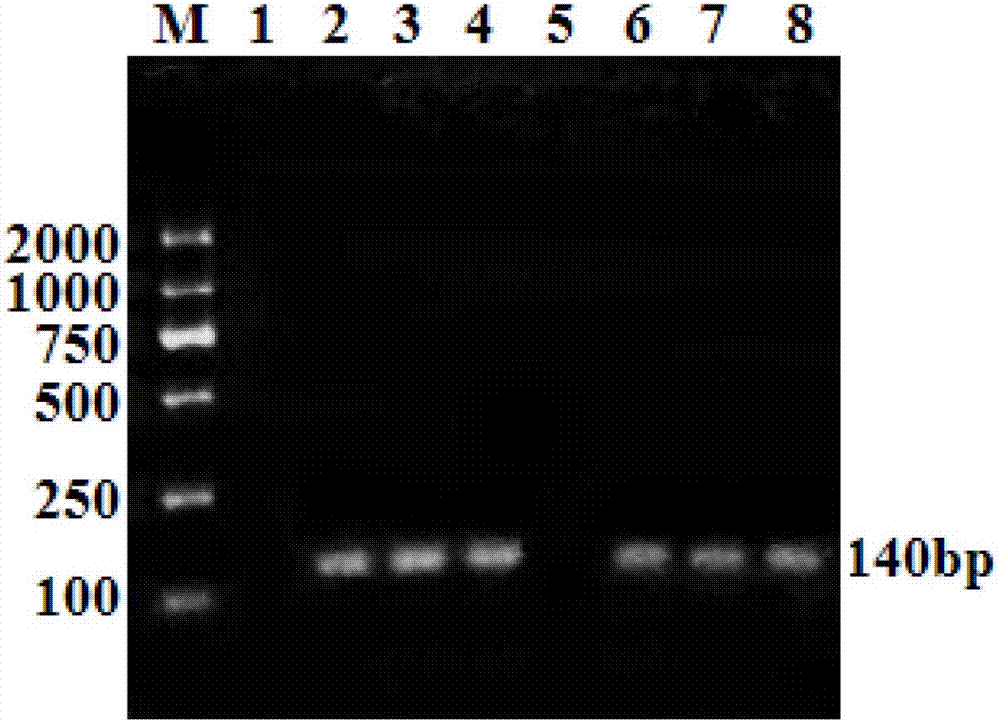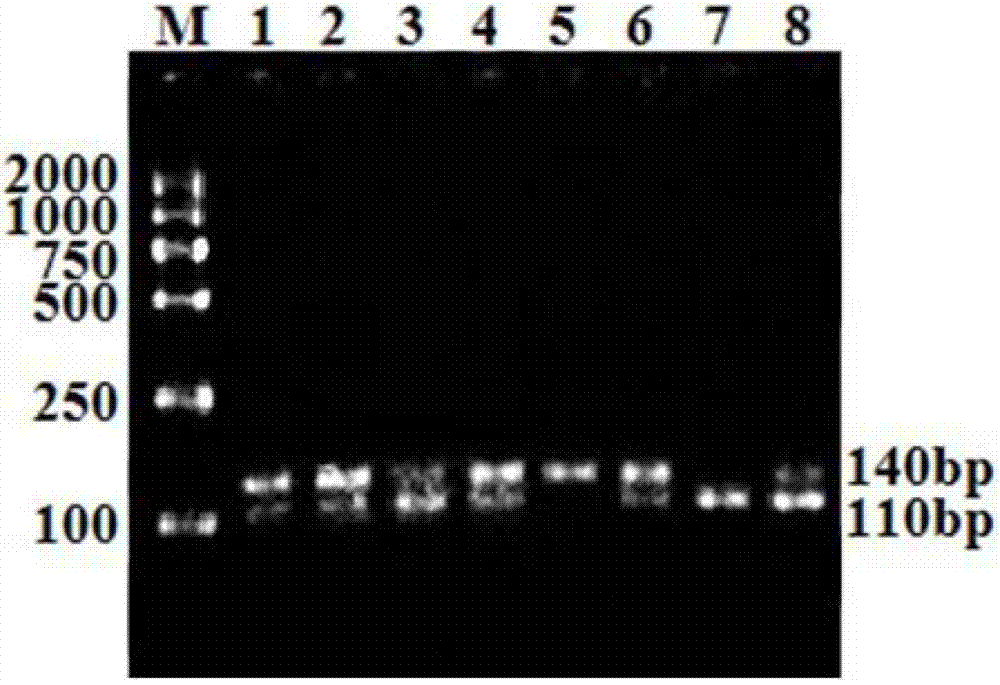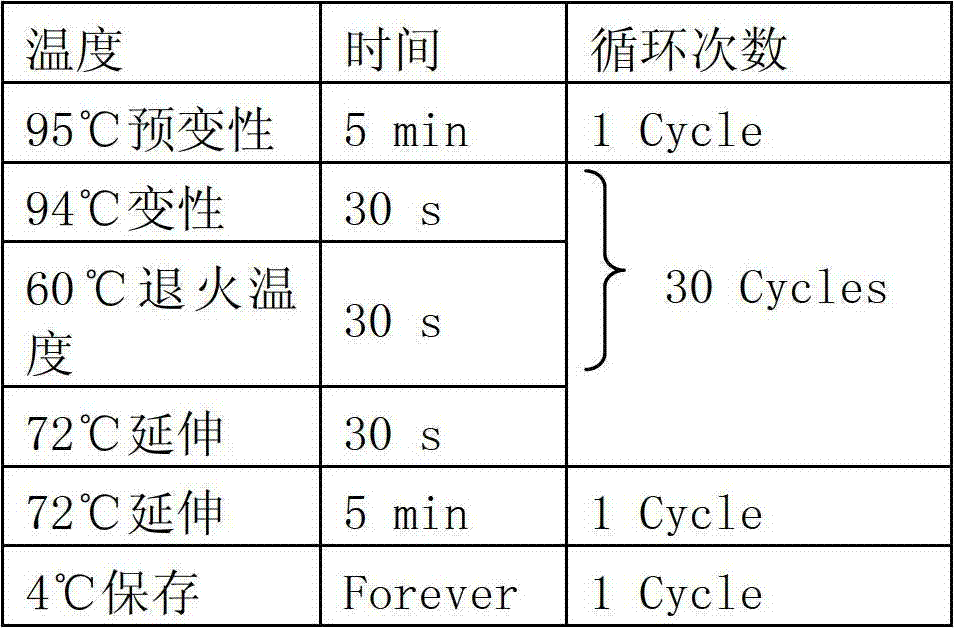Kit for simply, conveniently and rapidly detecting sheep multifetal gene BMPR-IB (bone morphogenetic protein receptor IB)
A kit and gene technology are applied in the field of kits for detecting the A746G site of the sheep BMPR-I B multiple-fetal gene, and can solve the problems of insufficiently lysed hair follicle cells, cumbersome operation process, complicated operation and the like.
- Summary
- Abstract
- Description
- Claims
- Application Information
AI Technical Summary
Problems solved by technology
Method used
Image
Examples
Embodiment
[0032] The kit for rapidly detecting the A746G locus of sheep BMPR-IB multifetal gene disclosed by the present invention includes the following hair sample DNA extraction solutions A and B, PCR amplification solution, restriction endonuclease Ava II, 10×Buffer R, ddH 2 O, dyes, instructions, the specific specifications are as follows:
[0033] Numbering
name
Specification (l / tube)
amount)
1
Hair sample DNA extraction solution A
1000
2
2
Hair sample DNA extraction solution B
1000
2
3
PCR amplification solution
1000
2
4
restriction endonuclease AvaII
1000
1
5
10×Buffer R
1000
1
6
dye
1000
2
[0034] 7
wxya 2 o
1000
2
8
manual
1
[0035] 1) Hair sample DNA extraction solution A
[0036] 1000μl of 175mM NaOH solution;
[0037] 2) Hair sample D...
PUM
 Login to View More
Login to View More Abstract
Description
Claims
Application Information
 Login to View More
Login to View More - R&D
- Intellectual Property
- Life Sciences
- Materials
- Tech Scout
- Unparalleled Data Quality
- Higher Quality Content
- 60% Fewer Hallucinations
Browse by: Latest US Patents, China's latest patents, Technical Efficacy Thesaurus, Application Domain, Technology Topic, Popular Technical Reports.
© 2025 PatSnap. All rights reserved.Legal|Privacy policy|Modern Slavery Act Transparency Statement|Sitemap|About US| Contact US: help@patsnap.com



